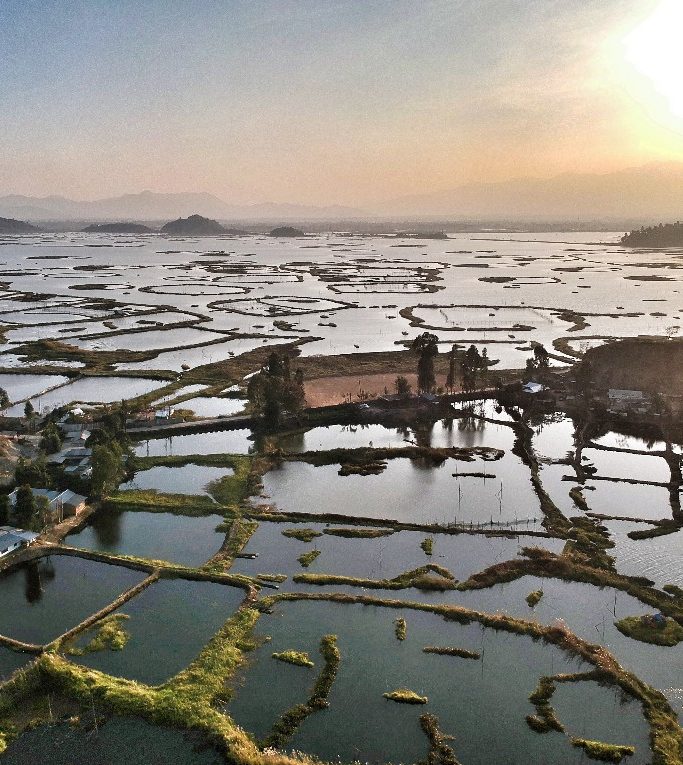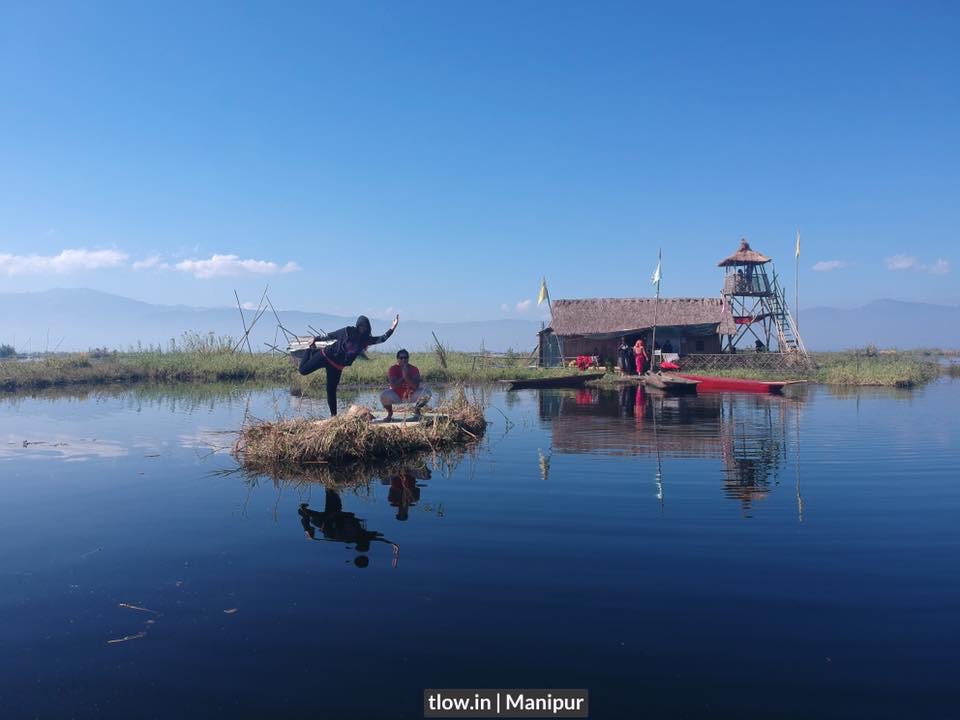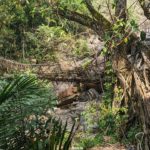
0
10 Fun facts about Loktak Lake, Manipur
Loktak Lake is the largest freshwater lake in Northeast India and is famous for the phumdis floating over it. The lake is located near Moirang in Manipur state, India. The etymology of Loktak is Lok is “stream” and tak is “the end”.
#1.The largest of all the phumdis covers an area of 40 sq kms and is situated on the southeastern shore of the lake.
#2.Located on this phumdi, Keibul Lamjao National Park is the only floating national park in the world. The park is the last natural refuge of the endangered Sangai (state animal), Rucervus eldii eldii or Manipur brown-antlered deer (Cervus eldi eldi), one of three subspecies of Eld’s deer. 

#3.This ancient lake plays an important role in the economy of Manipur. It serves as a source of water for hydropower generation, irrigation and drinking water supply. The lake is also a source of livelihood for the rural fishermen who live in the surrounding areas and on phumdis, also known as “phumshongs”. 
#4.Human activity has led to severe pressure on the lake ecosystem. There are 55 rural and urban hamlets around the lake that have a population of about 100,000 people. Considering the ecological status and its biodiversity values, the lake was initially designated as a wetland of international importance under the Ramsar Convention on 23 March 1990. It was also listed under the Montreux Record on 16 June 1993, “a record of Ramsar sites where changes in ecological character have occurred, are occurring or are likely to occur”.

#5.Of the two river systems which drain the Manipur state—the Barak River and the Manipur River— flows through the Manipur Valley. The river rises in the north at Karong, flows south of Imphal and hence is also known as the Imphal River. Along its course through the valley downstream of Imphal, the bed slope of the river is gentle. The drainage pattern is sub-dendritic, sub-parallel and sub-radial, dictated by the structure and lithology of the area. Imphal, Iril and Thoubal River valleys also exhibit a meandering river course. 
#6.With an average annual rainfall of 1,183 mm tropical monsoon climate prevails in the valley. Temperatures range from 0 to 35 °C. February and March are the dry months.

#7.Loktak Lake is fed by the Manipur River and several tributaries and ‘Ungamel Channel’ (Ithai Barrage) is its only outlet now. The origin of the Manipur river system and its tributaries, which flows in a north-south direction and drains into the lake is from the hill ranges immediately to the west of the lake. The five major rivers with an indirect catchment area of 7,157 s1. km are the Imphal (also called the Manipur River), the Iril, the Thoubal, the Sekmai and the Khuga. The other major streams which drain into the lake and which bring in a lot of silt are the Nambul, the Nambol, the Thongjarok, the Awang Khujairok, the Awang Kharok, the Ningthoukhong, the Potsangbam, the Oinam, the Keinou and the Irulok. The lake, located on the southern side of the Manipur River basin, is at the lowest elevation in the valley and no other major river flows into the lake, except a few rivulets.
#8.There are around 57 species of waterbirds and another 14 species of wetland associated birds have been noted in the lake including 28 species of migratory waterfowl (most migrating from different parts of the northern hemisphere beyond the Himalayas). Also recorded were 425 species of animals—249 vertebrates and 176 invertebrates). The list includes rare animals such as the Indian python, sambhar and barking deer. Keibul Lamjao National Park is the natural habitat of one of the most endangered deer, the brow-antlered deer (Cervus eldi eldi) which was once thought to be extinct, which was declared a national park only to preserve and conserve this species of Eld’s deer.

#9.Well connected by road and air, Imphal, the capital city of Manipur is 39 km away from the lake, by road. The lake is a unique destination for tourism. The lake offers excellent opportunities for visitors to enjoy the beauty of the lake and its several islands located inside it that are studded with floating phumdis of different geometrical shapes. The important islands which offer facilities for visitors are the Sandra and Phubala. 
#10.The livelihood of people dependent on the sale of edible fruit and rhizome of lotus plant products and Euryale ferox (thanging) has suffered due to a steep decline in the growth of these plant species.
–>For a similar experience, >>Click here











